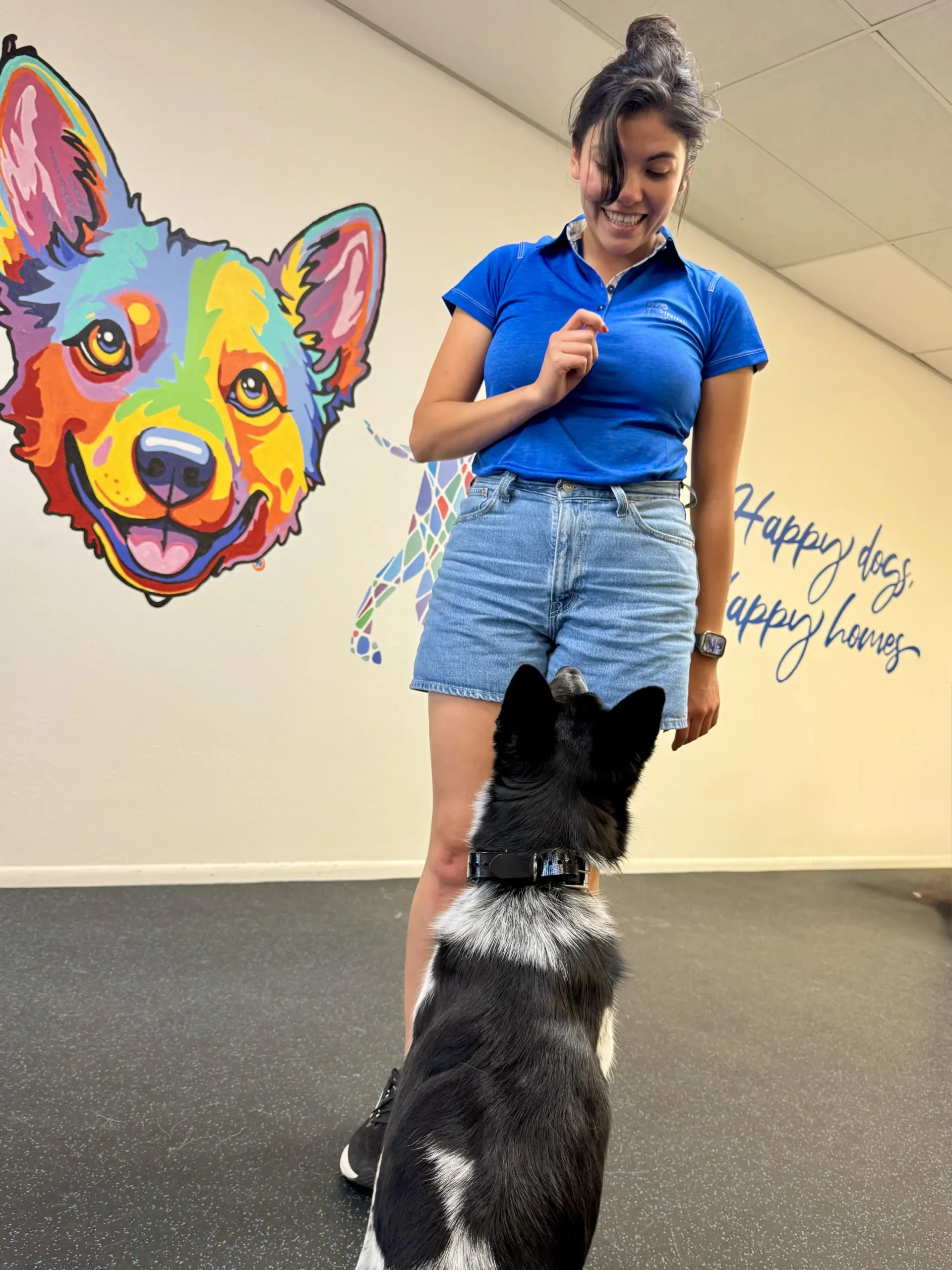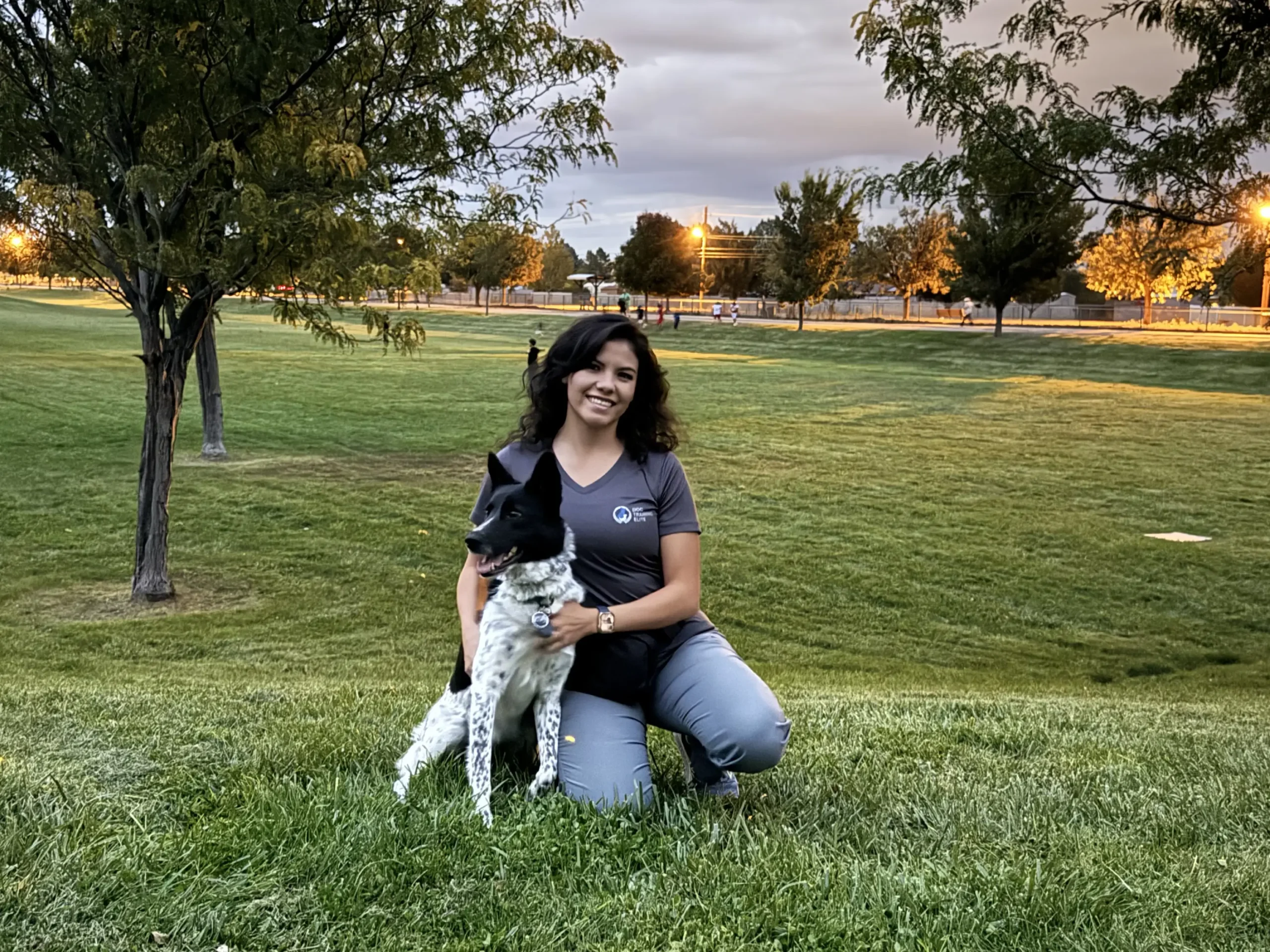Courtesy photo: Kayla Donaldson and her dog, Yuki.
What Families Should Know Before Bringing Home a Dog This Holiday Season
By Kayla Donaldson, Lead Dog Trainer, Dog Training Elite New Mexico
Every year around the holidays, I start getting calls from families across Albuquerque and Santa Fe who are excited—and sometimes overwhelmed—by a new addition to their home: a puppy. For many children, waking up on Christmas morning to find a furry bundle of joy under the tree is pure magic. But as a dog trainer, I’ve learned that behind every adorable puppy moment comes a lot of responsibility, patience, and planning.
If your family is thinking about bringing home a dog this holiday season, whether it’s a rescue from the Santa Fe Animal Shelter or Espanola Humane, or a purebred puppy from a breeder, here’s what you need to know to make sure this new chapter starts off right.
Puppies Aren’t Presents—They’re Family Members
It’s tempting to picture the big reveal: a red bow around a wagging tail, your kids’ delighted faces, and a joyful holiday memory. But remember—dogs aren’t short-term gifts. They’re 10–15 year commitments, and their needs will change as your family changes.
Before you commit, take time to talk as a family about what it means to add a dog to your household. Who will walk, feed, and train them? What happens when school or sports pick back up? Are you prepared for chewed shoes, accidents on the carpet, or a few sleepless nights?
Bringing home a dog can be one of the best decisions your family ever makes—but it works best when everyone is ready for the long haul.
Purebred or Shelter Dog: What’s Right for You?
One of the biggest questions families ask me is whether to adopt or buy from a breeder. The truth is, there’s no one-size-fits-all answer—it depends on your family’s goals, lifestyle, and experience level.
- Adopting from a Shelter: The Santa Fe Animal Shelter and Española Humane both do an incredible job matching dogs with families. Shelter staff often know each dog’s temperament, making it easier to find one that fits your household. Plus, when you adopt, you’re saving a life and supporting a community effort. You might even find a purebred or “designer mix” waiting for a home.
- Buying from a Breeder: If your heart is set on a specific breed—perhaps one that fits your lifestyle or allergies—do your homework. Look for ethical breeders who prioritize health and temperament over appearance or profit. Avoid anyone who won’t let you visit or doesn’t provide health certifications for both parents. A responsible breeder will ask you just as many questions as you ask them.
No matter which route you choose, take your time. A dog isn’t an impulse buy; it’s a lifelong partnership.

Courtesy photo: Kayla Donaldson and her dog, Yuki.
Puppy or Older Dog: Which Is Easier?
Puppies are adorable—but they’re also a lot of work. From potty training to socialization, every moment is a learning opportunity. The first few months can feel like having a toddler in the house again!
Older dogs, on the other hand, often come with some training already in place. Many are calmer, house-trained, and ready to blend into a household routine more quickly. They can make wonderful companions for families who want to skip the “chew everything in sight” stage.
If your kids are very young or your family has a busy schedule, an adult dog might actually be a better fit. The key is to match your dog’s energy level and personality with your family’s lifestyle—not just your heart.
Matching a Dog to Your Family’s Lifestyle
Different breeds (and even individual dogs within a breed) have very different needs. Before you decide, ask yourself what kind of life you want to share with your new furry friend.
- Active families might thrive with a breed like a Labrador, Australian Shepherd, or mixed-breed with high energy. These dogs love hiking, running, and outdoor adventures—but they’ll need daily exercise and structure.
- Calmer households or families with small children might do better with lower-energy breeds such as a Basset Hound, Bulldog, or older mixed-breed dog.
- Families with allergies may want to explore breeds that shed less, such as Poodles or their mixes (though no dog is truly hypoallergenic).
Think about your future lifestyle, too. A puppy that’s adorable at 10 pounds could weigh 80 pounds by next Christmas. Consider your yard size, your travel habits, and how much time you realistically have for training and exercise.
Red Flags and Green Flags When Choosing a Dog
When meeting potential dogs, watch for clues in their behavior:
Green Flags
- Curious but calm around people
- Recovers quickly from new experiences (a noise, a stranger, a new smell)
- Shows interest in play or gentle affection
Red Flags
- Extreme fear, shaking, or avoiding all contact
- Unprovoked aggression (snapping or lunging)
- Very low energy or disinterest, especially in a young dog
If you’re adopting, shelter staff can guide you. If you’re working with a breeder, meet the puppy’s parents when possible—it gives a good idea of future temperament.
The Holiday Timing Challenge
Adding a puppy during the holidays can be both joyful and stressful. Your home may be full of visitors, decorations, and travel plans—all of which can overwhelm a new dog.
If you’re set on a holiday pup, consider making the announcement part of the gift, but wait until after the holidays to bring the dog home. Use Christmas morning to share the news with a collar, leash, or framed photo of your soon-to-be furry friend. That way, your family can prepare together and start the new year ready for training and bonding.

Courtesy photo: Kayla Donaldson and her dog, Yuki.
Why Training Early Makes All the Difference
At Dog Training Elite New Mexico, we see a huge uptick in calls every January and February—families realizing that their cute holiday puppy now has a mind of their own!
Many people don’t know where to start. Should they wait until their puppy is six months old? Should they train at home first? The best answer is: start early and get help when you need it.
Puppies begin learning the moment they walk through your door. The earlier you start building positive habits—potty training, crate training, obedience, socialization—the better your results will be. Professional training not only teaches your dog manners, but also strengthens your bond and builds confidence for everyone in the family.
Whether you choose in-home training, group classes, or private lessons, make sure your program is built on trust, respect, and clear communication. That’s the foundation of every great dog-owner relationship.
Final Thoughts
Bringing home a new dog is a beautiful way to grow your family—but it’s not something to rush. Take the time to research, prepare, and find the right fit.
When you do, you’ll gain more than a pet—you’ll gain a loyal companion, a playmate for your kids, and a source of unconditional love for years to come.
And if you ever need help getting started, my team at Dog Training Elite New Mexico is here to guide you every step of the way—from choosing the right dog to creating a calm, happy home for everyone (paws included).
Dog Training Elite New Mexico
In-home obedience, puppy, therapy, and service dog training across the Albuquerque metro and surrounding areas. Learn more at dogtrainingelite.com/nm

Courtesy photo: Kayla Donaldson and her dog, Yuki.
Kayla Donaldson is the Lead Dog Trainer at Dog Training Elite New Mexico.




